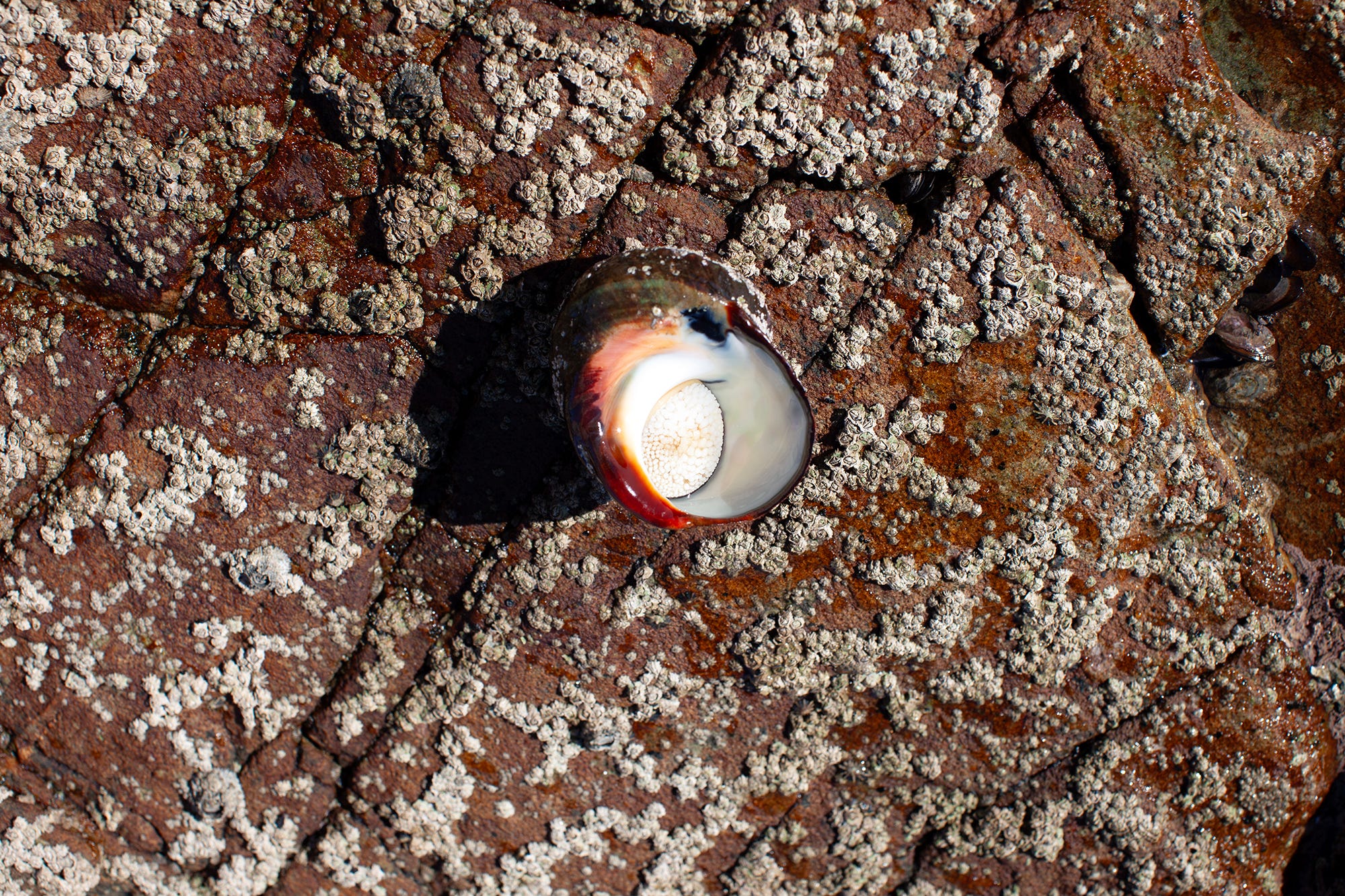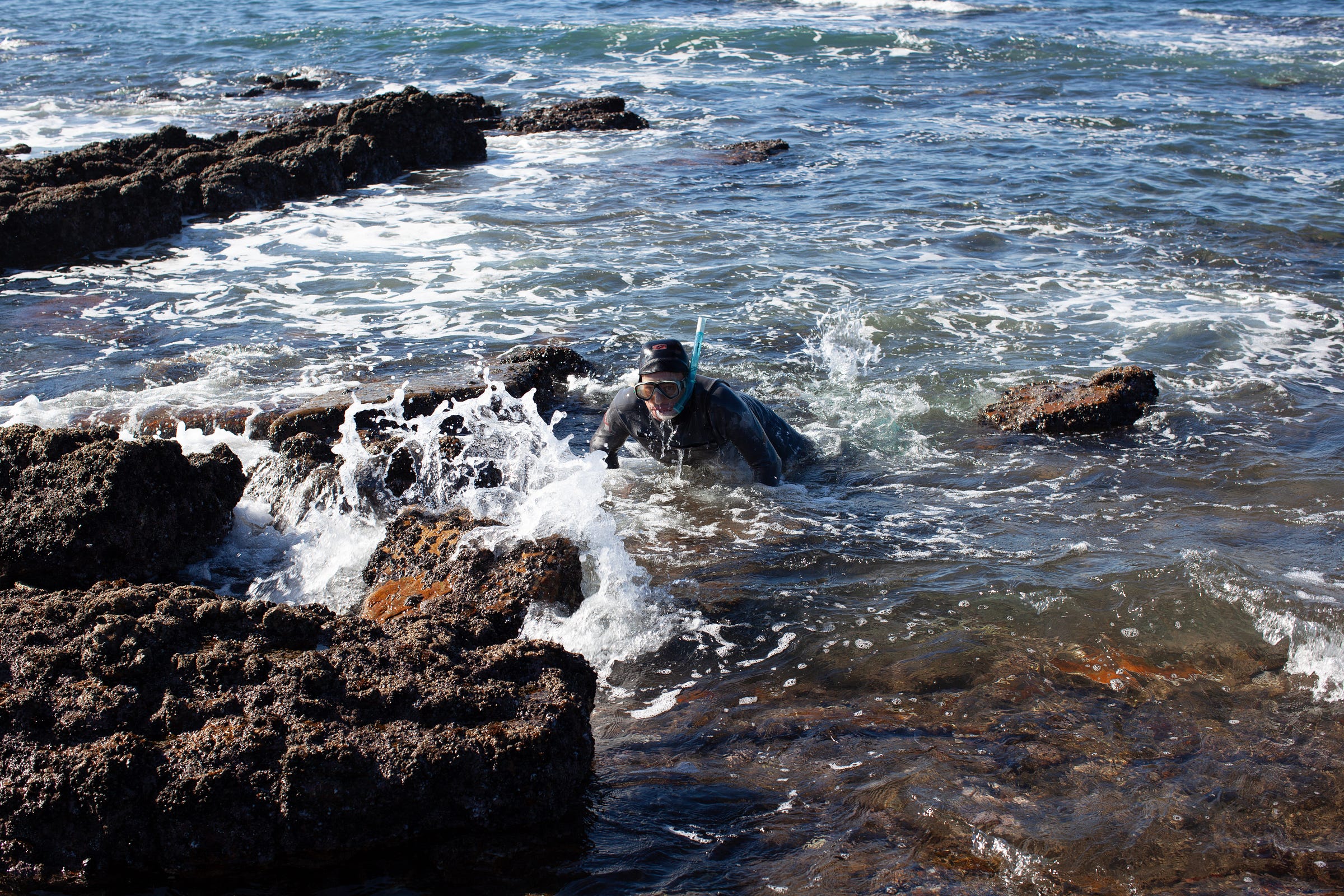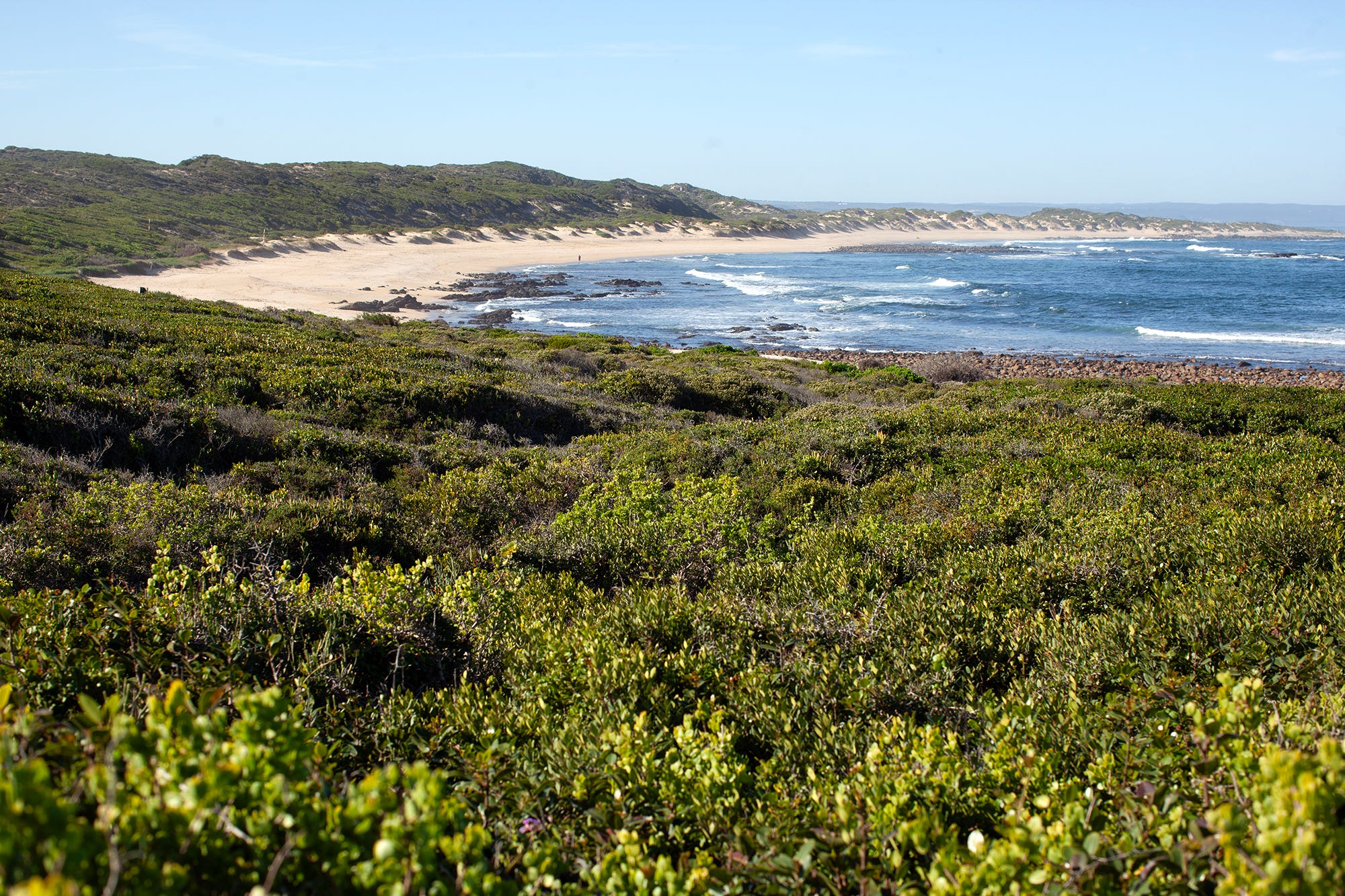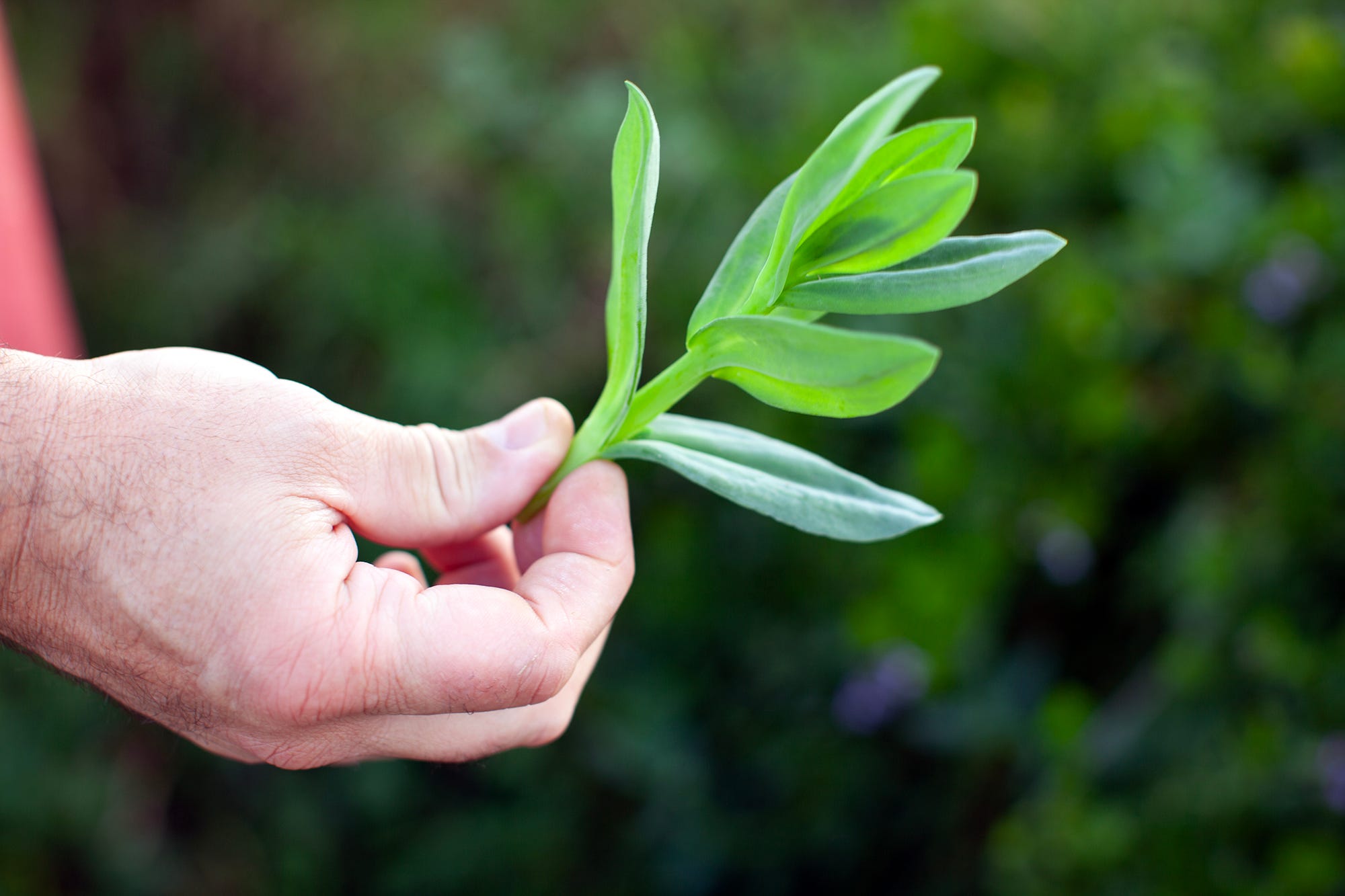The following story begins a multi-part series that documents research done in 2024 in South Africa’s Western Cape. It was one of those trips that kind of just happened on a whim. I was in touch with the Cape Town based chef and restauranteur Peter Templehoff and he told me about this strange relationship he was forming with a paleoanthropologist that was studying human origins. To my surprise, the origins and evolution of homo sapiens had a lot to do with what they ate. For someone that spends most of his days researching what humans have been eating for a few thousand years (but mostly the past century), wrapping my brain around something that had happened 150,000 years ago was rather difficult. If I wanted to really understand it, I would just have to go. There was a short window of when it could happen and I had some time, so I went. I had no assignment or real outline of what this story might become, just the intuition that it was going to be interesting (if not for you, reader, at least for me). After the trip, I considered pitching the idea to a mainstream publication, though it was hard to describe in a simple paragraph. Plus, places to publish stories that wander across time and space for thousands and thousands of words are quite rare these days. I’m not even sure they would believe me anyway. This is part I of III.

“This is the honeypot,” says Dr. Jan De Vynck. He’s just pulled an alikreukel, a species of sea snail, out of the ocean. Also called giant periwinkle or olly krik, the alikreukel (Turbo sarmaticus) fit in the palm of his hand. It had a pretty, reddish shell with a white flesh protruding from its opening. The alikreukel are often exploited for use as fishing bait, and there’s a limit of five per person per day, but to the early hunting and gathering communities that lived here around 150,000 years ago, these mollusks were plentiful.
While these early humans would still have to be aware of predators, as the Shark Bite Kit on the beach alerted us, and the strong waves crashing against the rocks, any primitive hunter gatherer could walk out over the rocky pools and into the different intertidal zones to seek out these marine resources with minimal effort during low tide. As the snails, as well as other marine resources like mussels and limpets, lived in different depths, some a little bit deeper than humans without any sort of diving equipment would go, they would continually replenish. It was a resource that wouldn’t be depleted. It’s this ease in gathering and maintaining this marine resource that helped contribute to his theory that this corner of the world, way down at the very bottom of Africa, this anomaly of biodiversity, at a time when we were at our most vulnerable, helped shaped homo sapiens into the species that would come to dominate the planet.
“The addition of this resource made us smart,” De Vynck, a paleoanthropologist from the African Centre for Coastal Paleoscience at Nelson Mandela University, says as we lay the snails out on the rocks and measure for size. “We know from our work that this one species was fundamental in our cognitive development as a species.”
De Vynck is tall and thin with scruffy, sandy blond gray hair. He’s wearing flip flops, board shorts and a faded blue t-shirt that says “Own Your Future” on it. He has the look of a surfer and I’m not surprised when I later find out that he got into paleontology after selling a sportswear company he founded.
I was introduced to his work by Peter Templehoff, the Cape Town based chef and restaurateur. They connected over the native ingredients that De Vynck is researching, many of which are no longer in use or used sparingly. He works closely with indigenous San communities, the most direct descendants of these early homo sapiens and one of the last hunter-gatherer societies left on earth, whose foraging customs and botanical knowledge often serve as a guide. Together, De Vynck and Templehoff have been finding ways to include these ingredients on menus at Fyn, a Japanese-South African fine dining restaurant that has been garnering international attention for its expressions of South African biodiversity, as well as at Beyond in the Buitenverwachting vineyards of Constantia, where they serve a specific Origins of Flavor menu that connects with many of these ingredients. The story, as I saw it, was distinct from a chef trying to incorporate more native ingredients on their menu, but something deeper, about who we are as a species and where we fit in on this planet.
Templehoff mentioned he was going foraging with De Vynck and I was welcome to come along, so I hopped on a plane to the bottom of the earth. Hours after landing Templehoff and I were snacking on biltong in a car with the CEO of his restaurant group, Paul Bruce-Brand, driving east from Cape Town for hours across the semi-arid hills of the Western Cape as we moved along the southern coast of the continent. We pull up in an oceanside parking lot in the town of Stilbaai, a quiet beach community, and De Vynck shows up soon after. Within 20 minutes he fills a mesh bag full of alikreukel.
More than anything else, the evolution of homo sapiens had to do with calories. Where they came from and how much effort was needed to get them. The addition of the omega rich seafood like mussels, limpets and ocean snails available in these intertidal zones, combined with the plants, especially geophytes with bulbs or rhizomes from a type of rare landscape called the fynbos in South Africa’s Cape Floristic Kingdom, the smallest of the world’s six floral kingdoms, was enough to boost the development of high-level cognitive functions in homo sapiens around 150,000 years ago.
To understand De Vynck’s work, you must reframe your concept of time. Many of us, myself included, don’t realize how much of humanity has occurred prior to the pyramids of Egypt or ruins of cities like Caral in Peru, monuments that we consider ancient, but can still be observed with our own eyes. Rarely do we think beyond 5,000 years ago, though that is a small fraction of our time on Earth.
Homo sapiens, our species, have been around for more than 300,000 years, evolving from the homo genus, which dates back a couple of million years. The changes De Vynck is looking at, examining how humans came to be and evolved in this place, occur over periods of tens of thousands of years. They don’t occur because of single individuals or communities, but by repeating patterns, shaped by shifts in the climate and the distribution of resources, over centuries and millennia.
While homo sapiens originated in Africa, around 200,000 years ago they had migrated out of the continent, as fossil records show them around the Mediterranean, parts of Europe and potentially Asia. Yet, the species eventually dwindled. About 195,000 years ago, planet earth entered a glacial stage known as Marine Isotope Stage 6, lasting about 70,000 years. Food became scarcer. The temperature colder and dryer. At the peak of this Ice Age, homo sapiens were down to around to a few hundred individuals. We very nearly went extinct.
Yet, this minor group of hunters and gatherers was able to survive and soon thrive. They would make rapid advancements in cooking, art, and tool making that allowed them to expand their population and migrate off of the continent 50,000 to 60,000 thousand years ago, becoming the dominant and eventually only species of our genus. That small, fragile group, a virus or massacre away from being wiped out, would become the common genetic ancestors for the more than 8 billion humans that make up the global population.
Over the last few decades evidence has been coming together as to where these early humans were able to survive when times got rough, and it is increasingly pointing to the tip of South Africa. Much of the research of De Vynck and his colleagues over the past couple of decades has been to uncover how and why. To do so they have had to imagine what the ecosystem here was like.
During the Late Pleistocene, much of this area was uncovered. The ocean was much further away, revealing what is now called the Palaeo-Agulhas Plain, an 85,000 square kilometer landscape that is now mostly submerged beneath the ocean. While plant and animal populations were heavily reduced or died out on other parts of the continent because of the climate, this now extinct ecosystem was like an oasis, a habitat for an array of flora and fauna.
Game was teaming on the Palaeo-Agulhas Plain. There were zebras and giraffes to hunt, among other large mammals, that hunting and gathering communities followed here. De Vynck has found evidence of sable antelopes (Hippotragus niger), a species that many concluded long ago could never be found this far south. Yet homo sapiens always had access to game. What was here that was different?
With lower ocean temperatures shellfish populations were even more abundant, so they were readily available. Yet, humans never considered eating them until they became desperate. Resources must have been depleted enough, communities struggling so hopelessly to survive, that they concluded that these strange creatures from the ocean could be eaten. At archeological sites along the Western Cape there are layers upon layers of shellfish and other marine resources that indicate consumption as far back as 164,000 years ago. It’s the oldest evidence of humans eating anything from the coast.
We spend the rest of the morning foraging for sea urchins and whatever other edible marine species we could find. Templehoff wades into a shallow, muddy stream with a metal stick and pulls out a few razor clams. We also check the shoreline and lowland trails for briny beach weeds and succulents like spekboom (Portulacaria afra), ice plant (Mesembrianthemum crystallinum) and dune spinach (Tetragonia decumbens).
Afterward, we walk over to the Blombos Museum of Archaeology, which is named after Blombos Cave, a well-known archeological site that is about 25 kilometers away and includes some of the discoveries found there. Outside the entrance, we pass by a fenced off pond. A worn-down sign says OK Grocer: Kos Vir Palings Geborg Deur (OK Grocer: Sponsors Food For Eels). There are eight African longfin eels (Anquilla Mosambica), a species that has been inhabiting this pond for around 200 years. A woman from the museum comes out and feeds them chicken livers and one by one all eight of them come out. Each has a different personality she says.
“From here, they swim up the east coast of Africa to the coast of Madagascar where they mate and die,” explains De Vynck. “Five years later their offspring come back to this little pool. That’s a genetic GPS. It’s a nice analog with the story you’re hearing now.”
The museum is about to close for lunch, but De Vynck finagles us a half hour to do a quick run through. We talk about cave paintings depicted in pictures and some of the graphs that show migrations of homo sapiens out of Africa, though they are a little bit outdated. There’s something he wants to show us, and he leads us into one of the back rooms.
“We talk about this cape as the cradle of human culture, but what’s the evidence?” he asks.
He brings us to a 73,000-year-old piece of ochre, found in Blombos Cave, that is adorned with deliberate geometric markings. It’s believed to be the world’s oldest example of art. There’s also a paint processing kit inside an abalone shell. It’s a replica of a 100,000-year-old artifact with a little stick that could have been used for a brush, plus cobalt and other minerals. It’s the oldest of its kind ever found. There’s Stingray rock, 130,000 years old, and shaped like a stingray though you must really squint your eyes to make it out. De Vynck says they once overlaid an actual stingray on it, and it fit perfectly. They call it biomimicry, creating something that looks like something from the natural environment.
There are other anaglyphs too and they know that humans made them and weren’t some natural flukes because of the layers of symmetry and the numbers of them. Then there is a piece with a geometric shape found east of Stilbaai, which dates to 139,000 years ago. It’s triangular and De Vynck interprets it as a vagina, though more testing needs done. It’s one of several elements here that reshapes our understanding of humankind.
“Effectively, though not everyone is going to believe it,” De Vynck says, “but the chances are very good that here in this little museum is the oldest art of our species.”

We retreat to an Airbnb for the night, where Templehoff prepares a braai, South Africa’s version of barbecue. I need to decompress. I’m lost in a time warp. Part of it is the jet lag, but it’s also coming to grips with time itself. The braai, the simple act of cooking over fire, seems appropriate for the moment. As the wood burns, we sip on a bush vine Pinotage from Scions of Sinai, one of several great winemakers I was introduced too that were helping preserve heritage vineyards that were being uprooted. Templehoff tosses some of the plants we gathered throughout the day for a salad. He steams the alikreukel, chills it, then slices it up and flash fries it a pan with a little garlic and olive oil.
De Vynck arrives with his colleague, Dr. Willo Stear, and his brother, who are in the area researching ancient animal tracks. After talking over the days finds, Stear mentions research he did that showed a place at the edge of the sea where elephants, hundreds of thousands of years ago, would send seismic signals to whales. He continued speaking but I had to stop him.
“You’re telling me elephants and whales can communicate?” I ask, and he nods. After a moment of stunned silence, I ask: “What do they talk about?”
This idea shook me. The largest land mammal and the largest sea mammal speaking to each other. It isn’t a one-off theory either. It has been documented elsewhere too. Elephants can even listen to a whale’s low frequency signals through the pads in their feet, I would soon discover. There is so much I don’t know about the things that shape this planet and how it works.
As I pondered the idea, I notice the alikreukel in my salad. There it was again. A seemingly inconsequential piece of seafood amidst all these other fascinating flavors in a world that was so unfamiliar. Yet the magnitude of what this addition to our diets represented was not lost on me. Over time, because of it, we could think differently. We could mentally map seasonal resources and understand the phases of the moon and their effect on the tides. We could build new tools that allowed us to survive better. We could create culture. We could create art. We could create cuisine. It provided us an evolutionary boost that changed our path through history, but it was just one part of the puzzle.







Nick,
Thank you so much for this. Not only is it fascinating and educational, but very hopeful (from a few hundred breeding females to us today, through incredible resilience!). I can't wait for the next installment. Best - John
Fantastic read, almost lost me at the “pairs of breeding females”, may need to spruce up feminist sensibilities. Food, history, whales and elephants talking, archaeology, wine and seafood. It’s got the lot.
There’s this theory called “the doctrine of signatures”, in essence it means if you study the form of something from the natural world, you’ll see the signals telling us what it’s good for. Think walnuts/brain, I’m wondering about this snail and the brain.
All very interesting, I look forward to your next piece.